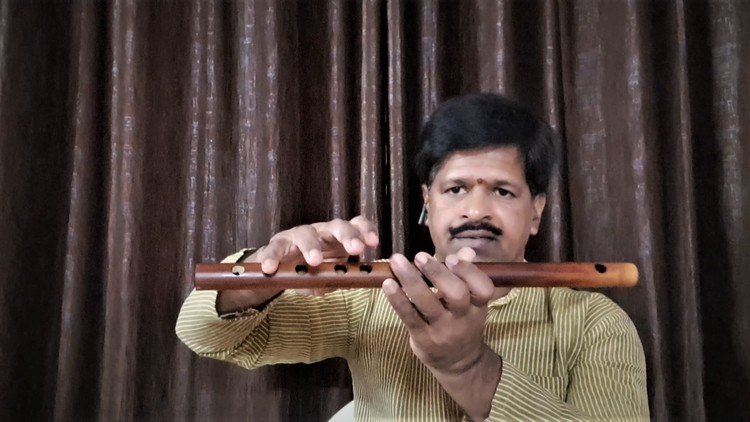Study a well-liked Varnam within the raaga Shanmukhapriya
What you’ll study
College students can simply decide up the fingering expertise by studying line by line of the Varnams.
College students will get to study the straightforward notations to know and apply.
College students can apply and play alongside whereas watching the fingering and notations concurrently.
College students can study the Half Notes on Flute.
Why take this course?
Varnams are a basic and important a part of Carnatic music, serving as a take a look at mattress for each vocalists and instrumentalists to show their technical prowess in addition to their inventive sensibility. They’re composed with a particular construction that features numerous parts, every providing a distinct side of musical expression.
Right here’s a breakdown of the varnam format and its parts:
- Pallavi: A phrase of sahitya (lyrics) which is about to music, normally in mukthai swara (melodic notes sung syllable by syllable). It’s usually repeated to ascertain the raga and taala.
- Anupallavi: A continuation of the pallavi with slight variations or further sahitya, reinforcing the raga and taala.
- Chitta Swara (Mukthayi Swara): This part is sung utterly with syllables, with out phrases. It’s a demonstration of the singer’s technical talent in dealing with swaras and infrequently contains advanced rhythmic patterns like jathis and kalpita swaras.
- Charanam: A very powerful half the place sahitya is about to music, sometimes in a slower tempo than the pallavi and anupallavi. It expresses the raga’s feelings and is sung in ‘madhyama kala’, which is roughly 1.5 occasions the velocity of the preliminary parts.
- Ashtapadi or Tillana: An elective part that follows the charanam, used for quicker rhythmic patterns. It is usually often called the “Tani Avarthanam” and might be advanced, showcasing the musician’s expertise in layakari (tempo administration) and taala vidwi-ti (rhythmic data).
- Conclusion: That is normally a repetition of the pallavi or anupallavi, however at a quicker tempo, usually doubling the velocity to match ‘madhyama kala’. Some varnams might embody an Anubandham which is an epilogue in sahitya, bringing the piece to an in depth.
The tala utilized in varnams can range, with Adi and Ata being the commonest. Adi talam has 8 beats, whereas Ata talam has 14 beats. The swaras and sahitya are sometimes organized to suit these beats, and the usage of layakari permits for variations in rhythm and tempo that add to the musical expertise.
Well-known varnams in numerous talas:
Adi Tala Varnams:
- “Sami Ninne” in Shree ragam by Karur Devudu Iyer
- “Ninnukori” in Mohanam ragam by Poochi Srinivasa Iyengar
- “Evvari Bodhana” in Abhogi ragam by Patnam Subramania Iyer
- “Period Naapai” in Todi ragam by Patnam Subramania Iyer
- “Valachi Vacchi” in Navaraagamalika (9 ragas) by Thyagaraja
Ata Tala Varnams:
- “Viribhoni” in Bhairavi ragam by Pacchimiriam Adiyappa
- “Nera Nammiti” in Kambhoji (Kaanada) ragam by Poochi Srinivasa Iyengar
- “Chalamela” in Sankara bharanam ragam by Swati Tirunal
The varnam is a flexible type that permits for each intricate vocal workouts and deep emotional expression, making it a beloved and integral a part of Carnatic music custom.
The publish Study Carnatic Flute | Intermediate Stage | Varnams Vol – 16 appeared first on destinforeverything.com.
Please Wait 10 Sec After Clicking the "Enroll For Free" button.







